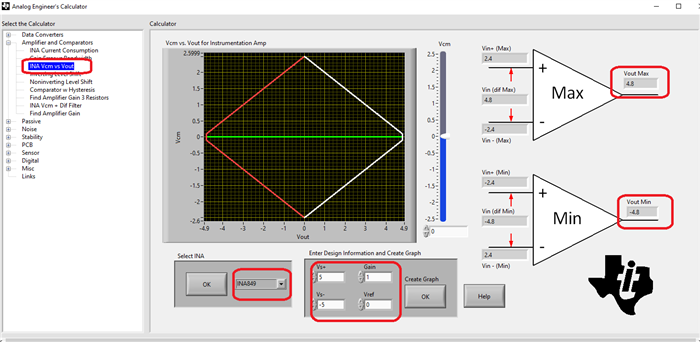Other Parts Discussed in Thread: INA848, , INAEVM-ALT-SO8
I have selected an INA848 IC instrumentation amplifier for a project for the following unique features observed in it’s datasheet that matches my requirement.
- Output Amplitude vs Freq graph - 0 to 5Vpp @500kHz with Power rails at +/-5V(Datasheet page 13)
Can go even from 0 to 12 Vpp @500k Hz with power rails at +/-15V
- Gain 1
- Slew Rate: 35V/us
- CMRR: 62dB @500kHz
The requirements I need for my project application are as follows:
- Input constant frequency: 500kHz
- Input Amplitude: 4 - 5 Vpp
- Ampifier Gain: Unity Gain (To have variable gain whenever needed)
- CMRR: Good
- Good Slew Rate
Datasheet: www.ti.com/.../i...15411&ref_url=https://www.google.com/
I have observed the following limitations in this IC when I test it practically on a breadboard.
- With power rails set at +/-5V, The output sine waveforms starts distorting at input of 2.5 Vpp @500kHz although the datasheet mentions that the output Vpp can go upto 5Vpp @500kHz
- When I test it using +/-15V power rails, the IC gets super hot and I feel that it wil burn off, so I’m guessing it would get defective when the IC gets super hot. It does not seem to match the datasheet. The datasheet mention on page 13 that at +/-15V power rails, at 500kHz the output can reach upto 12V pp but the IC starts getting super hot when I start increasing the the power rails from +/-5V
Please assist me. Is there something I am doing incorrectly during the test setup? I have checked my connection multiple times, but it always gives me the same results. Have tested it with two different ICs, both give the same results.
Any help would be highly appreciated.



